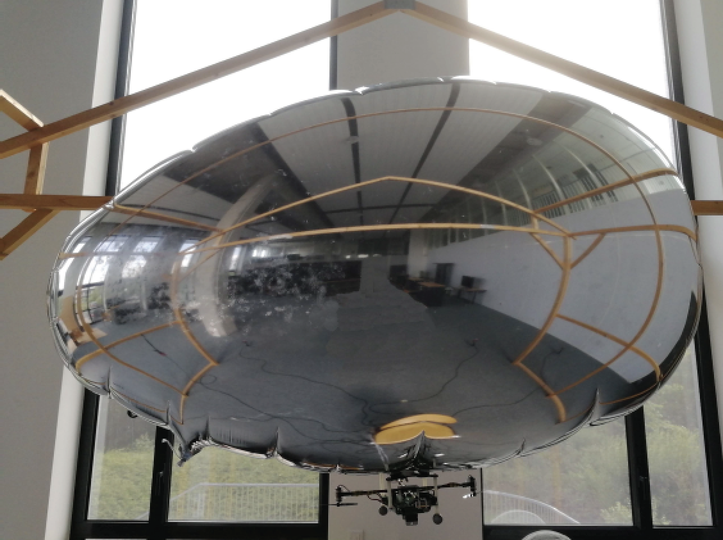Before imagining drones carrying out long explorer or surveillance missions on their own, the question of their battery life first had to be resolved. “The problem with current models is that we waste too much time recharging their batteries. Their batteries last less than thirty minutes because the motors are heavy and it takes a lot of energy to keep them in the air,” explains Gang Zheng*, a researcher in robotics and automation who has been monitoring the project within the team NonA-Post at Inria Lille-Nord Europe research center. “Hence the idea of creating a drone that’s also a blimp. By having a helium balloon carry the device, we no longer need a motor to make it fly, just to steer it. ” The first prototype tested by the researchers measures 71 x 105 x 55 cm, but weighs only 160 g. Result: its battery lasts almost a month.
A model-less but precise, controlled drone
This is not the first time that robotics researchers have developed a blimp drone. But, “the others are remote-controlled or designed to fly outdoors ”, explains Gang Zheng. “Our drone is designed to navigate inside buildings by automatic steering. ” Thanks to artificial intelligence, it is capable of identifying its precise location in a room, without a GPS, and avoiding objects that are in its way – including moving ones. This is where the expertise of the Non-A Post team in non-asymptotic systems was put to good use: “For the robot to be able to quickly ‘improvise’ a new path if it encounters an obstacle or is knocked and get back onto its original route, it needs to be able to estimate – in real time – variations in values that, just like its altitude or speed after a disturbance, are unpredictable. These estimates, called non-asymptotic estimates, are our specialty, as are model-less control systems, which enable it to react to them, ” explains team leader Denis Efimov.
The demonstration of the first prototype was conclusive: if the drone is pushed or weighted, it can return to its original trajectory in a room the size of an office, even when this path means passing through a narrow window without hitting the frame. This is achieved using OptiTrack tracking cameras, which are distributed around the room, and markers attached to the blimp. As soon as the sensors detect a variation in the position or speed of the robot, the system will generate a new trajectory to compensate for these disturbances. The experiment now needs to be repeated on a larger scale. To do this, another, larger prototype is currently being assembled.
The potential applications of the technology are multiple
Researchers in the Non-A Post team are considering many applications for their blimp drone which, in addition to being autonomous, is silent, stable and highly maneuverable. Whether controlled from a computer or by automatic steering, it could be of interest to logistics companies, in particular, for managing their stock: rather than taking stock of the products in a warehouse manually, they could fly the drone from shelf to shelf to scan each bar code. The drone could also be used for searching or mapping buildings, or even as a mobile surveillance camera. When patrolling a warehouse, its field of vision will be much wider than that of a wall-mounted camera. As soon as the second prototype has proven its worth, the team will contact potential industrial partners. In the meantime, the Hauts de France Region has already granted it funding as part of a project to optimize their urban logistics systems, and the French National Aerospace Research Center (Onera) has shown an interest in a potential partnership.
Non-A Post is a joint project team with Centrale Lille, CNRS and the University of Lille* *within the CNRS-Centrale Lille-Université de Lille, CRIStAL 9189 Joint Research Lab (UMR).
Gang Zheng recently joined the Defrost (Deformable Robotic Software) team, which is developing robots made of complex, deformable structures similar to organic materials.
